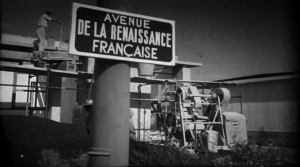Iluminace 2021, 33(4):33-49 | DOI: 10.58193/ilu.1716
From Moving Images to Archival Films: Contemporary Uses of Non-fiction Cinema in the Promotion of Rebuilt Cities
- Université Paris 1 Panthéon-Sorbonne / ViCTOR-E

Článek analyzuje, jak jsou některé filmy faktu (institucionální dokumenty, filmové týdeníky a amatérské filmy) produkované od roku 1945 do konce 50. let ve Francii uváděny jako archivní snímky v současných dokumentech o období po druhé světové válce. Tyto poválečné filmy faktu zachycují náročnou rekonstrukci měst, která byla na konci války těžce poškozena. Unikátnost tohoto architektonického dědictví se mezitím zdá být zapomenuta navzdory vynalézavosti moderní architektury 40. a 50. let. V posledních desetiletích dokonce došlo k čistému odlivu obyvatel z přestavěných center měst. Propagací tohoto architektonického dědictví hraje kino klíčovou roli v opětovném propojení obyvatel s historií, která formovala místní identitu těchto přestavěných měst, jako je Dunkirk nebo Lorient. Dokumenty vytvářené o ojedinělých životních zážitcích, jako je Unité d'Habitation navržená Le Corbusierem v Marseille nebo Cités Castors („Bobří“ města) postavená jejich obyvateli a pro ně, umožňují těmto malým komunitám sdílet pocit sounáležitosti a zachovat si kolektivní identitu. Kromě toho nám digitalizace a opakované použití amatérských filmů umožňují znovu objevit každodenní život během poválečné rekonstrukce.
Klíčová slova: nonfiction cinema, collective identity, modern architecture, France, post-WWII reconstruction
The article analyzes how some non-fiction films (institutional documentaries, newsreels, and amateur films) produced between 1945 and the late 1950s in France are featured as archive images in contemporary documentaries on the post-WWII era. These post-war non-fiction films depict the challenging reconstruction of cities that had been heavily damaged during the end of the war. Meanwhile, the uniqueness of this architectural heritage seems to have been forgotten despite the inventiveness of the modern architecture of the 1940s and 1950s. The recent decades have even witnessed a net outflow of inhabitants from the rebuilt city centers. By promoting this architectural heritage, cinema plays a key role in reconnecting the inhabitants with the history that shaped the local identity of these rebuilt cities, such as Dunkirk or Lorient. Indeed, documentaries produced on the singular living experiences like the Unité d'Habitation designed by Le Corbusier in Marseille or the Cités Castors ("Beavers" cities) built by and for their inhabitants allow these small communities to share a sense of belonging and to maintain a collective identity. Besides, the digitization and the re-use of amateur films allow us to rediscover everyday life during the post-war reconstruction.
Zveřejněno: 1. prosinec 2021 Zobrazit citaci
Reference
- Aasman, Susan, Andreas Fickers, and Joseph Wachelder, eds. Materializing Memories: Dispositifs, generations, amateurs (New York: Bloomsbury Academic, 2018).
 Přejít k původnímu zdroji...
Přejít k původnímu zdroji... - Blanchet, Elizabeth and Sonia Zhuravlyova. Prefabs: a social and architectural history (Swindon: Historic England, 2018).
- Boone, Véronique. "La médiatisation cinématographique de l'unité d'habitation de Marseille : de la promotion à la fiction," Massilia: Annuaire d'études corbuséennes, no. 1 (2004), 192-199.
- Bougourd, Caroline. "Une cité d'expérience entre patrimoine et récits : étude critique de la patrimonialisation, le cas des maisons préfabriquées de Noisy-le-Sec" (Unpublished PhD dissertation, Université Paris 1 Panthéon-Sorbonne, 2015).
- Canteux, Camille. "Les grands ensembles en images: Les ministères en charge du logement et leur production audiovisuelle (1944-1966)," Société française d'histoire urbaine 3, no. 20 (2007), 55-76.
 Přejít k původnímu zdroji...
Přejít k původnímu zdroji... - Canteux, Camille. Filmer les grands ensembles: Villes rêvées, villes introuvables: Une histoire des représentations audiovisuelles des grands ensembles (milieu des années 1930 - début des années 1980) (Paris: Creaphis Éditions, 2014).
- Charlesworth, Esther Ruth. Architects without frontiers: War, reconstruction and design responsibility (Amsterdam and London: Architectural, 2006).
- Clapson, Mark and Peter J. Larkham, eds. The Blitz and its legacy: Wartime destruction to Post-War Reconstruction (Farnham, Surrey: Ashgate, 2013).
- Diefendorf, Jeffry M., ed. Rebuilding Europe's bombed cities (London: Basingstoke, 1990).
 Přejít k původnímu zdroji...
Přejít k původnímu zdroji... - Ionescu, Michel. Cheminots et cinéma: La représentation d'un groupe social dans le cinéma et l'audiovisuel français (Paris, Budapest, and Torino: l'Harmattan, 2001).
- Lindeperg, Sylvie. Clio de 5 à 7: Les actualités filmées de la Libération : archives du futur (Paris: CNRS Éditions, 2000).
- Maeck, Julie and Matthias Steinle, eds. L'image d'archives: Une image en devenir (Rennes: Presses Universitaires de Rennes, 2016).
- Motrescu-Mayes, Annamaria, and Susan Aasman. Amateur media and participatory cultures: film, video, and digital media (London: Routledge, Taylor & Francis Group, 2019).
 Přejít k původnímu zdroji...
Přejít k původnímu zdroji... - Newsome, W. Brian. French urban planning, 1940-1968: the construction and deconstruction of an authoritarian system (New York, Washington, D.C., and Baltimore: Peter Lang, 2009).
 Přejít k původnímu zdroji...
Přejít k původnímu zdroji... - Odin, Roger. Le film de famille, usage privé, usage public (Paris: Méridiens-Klincksieck, 1995).
- Pol-Droit, Roger, ed. Figures de l'altérité (Paris: Presses universitaires de France, 2014).
- Rascaroli, Laura, Gwenda Young, and Barry Monahan, eds. Amateur Filmmaking: The home movie, the archive, the web (New York: Bloomsbury Academic, 2014).
 Přejít k původnímu zdroji...
Přejít k původnímu zdroji... - Simoni, Paolo. "The Amateur City: Digital Platforms and Tools for Research and Dissemination of Films Representing the Italian Urban Landscape," The Moving Image 11, (2017), 111-118.
 Přejít k původnímu zdroji...
Přejít k původnímu zdroji... - Val, Perrine. "Filmer les architectes de la Reconstruction : rendre présent un 'futur passé'?," transversale. histoire : architecture, paysage, urbain, no. 5 (2020), 48-56.
- Voldman, Danièle. La reconstruction des villes françaises de 1940 à 1954: Histoire d'une politique (Paris: L'Harmattan, 1997).
- Yarwood, John R. Urban planning after war, disaster and disintegration: case studies (Newcastle upon Tyne: Cambridge Scholars Publ., 2010).
Tento článek je publikován v režimu tzv. otevřeného přístupu k vědeckým informacím (Open Access), který je distribuován pod licencí Creative Commons Attribution 4.0 International License (CC BY 4.0), která umožňuje distribuci, reprodukci a změny, pokud je původní dílo řádně ocitováno. Není povolena distribuce, reprodukce nebo změna, která není v souladu s podmínkami této licence.


